 PAM PATTERSON PAM PATTERSON
|
 VISUAL PERFORMANCE AUDIO/VIDEO STATEMENT BIO RESUME EMAIL VISUAL PERFORMANCE AUDIO/VIDEO STATEMENT BIO RESUME EMAIL
|
|
VISUAL ART <<--back to visual art main COVID-19 Anxiety: Intergenerational Trauma (2020-2021) Epidemic/Pandemic: Generational Anxiety Sites redolent with foliage and vivid with memory – gardens, parks, beaches – have become refuges for many during COVID pandemic times. Those who have had access to such spaces talk about “a walk in nature” as being restorative. But often their entry to, or behaviour on, this land has been curtailed and regulated. There are other problematic intersections around these sites. Often these “natural” spaces have been historically represented by artists as vacant and unpeopled, silent and evocative. This portrayal resonates for me here around people and their representation. Often absent are Canada’s First Nations, Métis or Inuit people, people of colour, those living in poverty, people with disabilities. Other sites affected by the COVID-19 lockdown also enter this discussion. People who depend on faith communities or other cultural, ritual or familial gatherings have also been denied a right of entry to, or the use of, such spaces. This brings me to larger consideration of land and location. Land, for some, speaks to refuge, security, home, and connection. But many have been denied access to, or have experienced a deep loss associated, with land. Location, while it can speak to a physical place, can also be definitive of one’s culture, home, or personal values. COVID-19 has impelled us into a time of transition. “Location” has been disrupted and many of us have become nomads detached and deeply troubled by this disconnection. How then, I might ask, does this time provide a space for developing deeper dialogues – where location can be re-enacted through a potentially transformative practice? Canadian cultural theorist Natalie Loveless notes that spaces are now being made for practices grounded in literacies that tell other stories, uncanny stories that have the potential to carry within them “other ethics”. In my case and others, these stories are often painful; recording a loss; a loss of health, of refuge and of life. Indigenous scholar and storyteller Thomas King said in his 2003 Massey Lectures, “The truth about stories is that that's all we are... I tell [these] stories ... to suggest how stories can control our lives… for there is a part of me that has never been able to move past these stories, that is chained to these stories for as long as I live”. Located in Canada as Settler, descended from Irish farm stock, I, as queer disability artist, have been photographing and manipulating images taken in the village where my ancestors were purported to have lived in Ireland and at the historic St. Lawrence seaway immigrant arrival site of Grosse-Île. There are no written records of any of my ancestors having passed through or inhabiting these sites. A record only exists in family stories. The work I have developed for COVID-19 Anxiety addresses intergenerational trauma, the trauma of disease and loss. Many who left Ireland during traumatic times often return years – sometimes over generations - later with the pain unresolved. It sits as an immutable block in their psyche. Their perception has become, as Nuala O’Faolian said in a 1988 interview, “flattened out” making it almost impossible for them to comprehend their current location and identity, or potential to thrive in Canada (Clare). COVID-19 acts as a trigger to reanimate these stories pointing to familial absence, delusion and suicide. As an educator, I am attentive to how this pandemic is generating new pedagogies, but even more so, how it is re-initiating significant dialogues. With each epidemic and pandemic, generational anxiety builds. 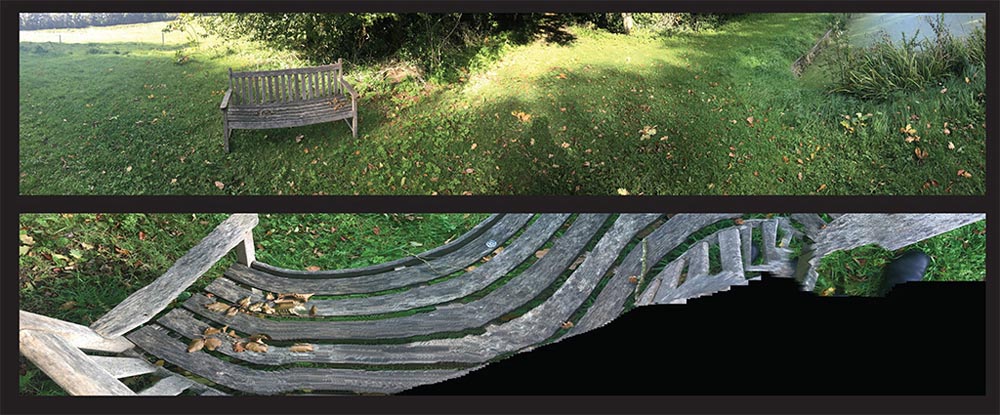 Pam Patterson, Bench – 39” H x 98” W, photo-digital print, 2019. The first image, Bench is made from photographs taken at Shankill Castle, Ireland. Here the metaphor of the castle garden is used. To be in such a garden is to stand in the middle of a vision of the world—the garden is in itself a cosmological statement where within its symmetrical plan and ordered framework, particularity is seemingly understood to be varied, fertile and hospitable. But how is this order maintained? What are the underlying expectations? Here this distorted garden bench acts in image to create a disturbance inviting us to see, through a contemporary pandemic lens, the past ruptured and reassessed through disability and the trauma of famine and expulsion. 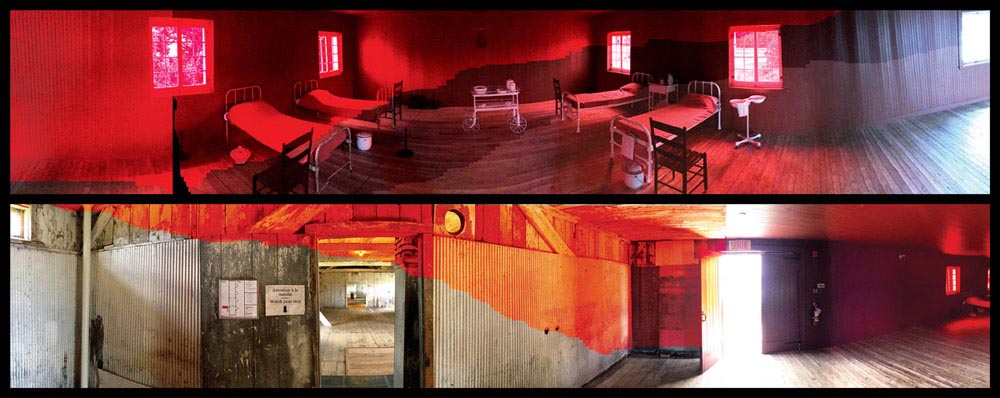 Pam Patterson – Cholera: Grosse-Île, 39” H x 98” W, photo-digital print, 2020 Cholera: Grosse-Île, as panoramic diptych, reveals the history of the Irish cholera epidemic deaths in the 1850s. The Irish Memorial National Historic Site on Grosse-Île is the largest Irish cemetery in the world. Ousted starving and homeless from their country and sent in “coffin ships” to Canada, many died on route, some hoping to recover, nursed in the cholera room on the island. As with the “Indian problem”, key members of the British parliament hoped to deal with the “Irish problem” either through deliberate neglect or by enabling the spread of disease.  Pam Patterson – Cathedral: Adare, 39” H x 98” W, photo-digital print, 2020 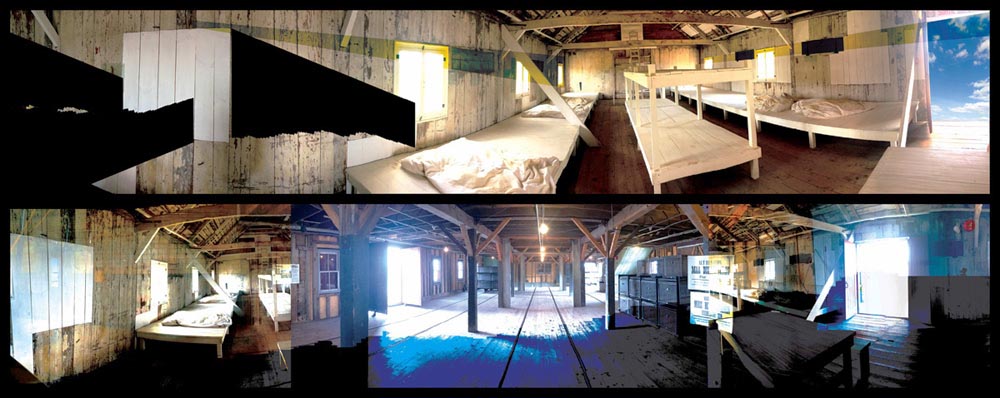 Pam Patterson –Barracks: Grosse-Île, 39” H x 98” W, photo-digital print, 2020 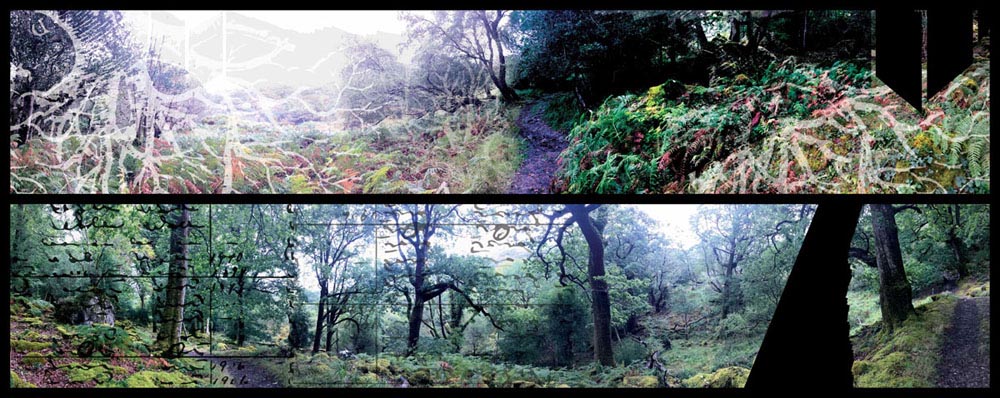 Pam Patterson –Killarney, Ireland, 39” H x 98” W, photo-digital print, 2020 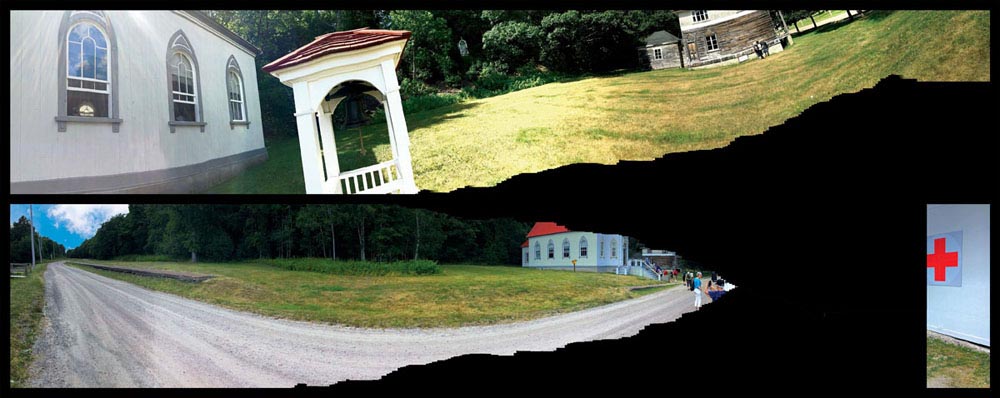 Pam Patterson –Chapel: Grosse-Île, 39” H x 98” W, photo-digital print, 2020 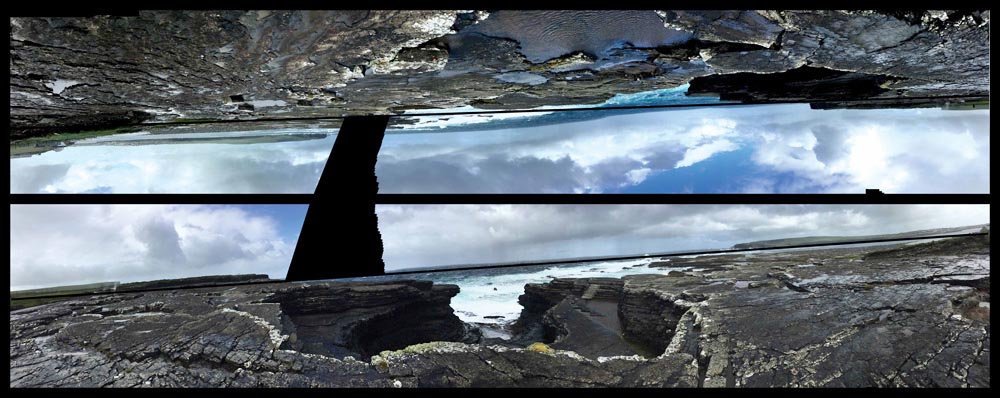 Pam Patterson –Kilkee, Ireland, 39” H x 98” W, photo-digital print, 2020 All original panoramic photographs were taken at different sites in Ireland and at Grosse-Île, Canada. Works Cited: Clare, Anthony [interviews Nuala O'Faolain, 1988 - clip]. “What it is to be Irish”. YouTube, uploaded by Mick Fealty, 6 Mar. 2012, www.youtube.com/watch?v=q1Sx7y7YEJc. Accessed 1 Sept. 2020. King, Thomas. The Truth About Stories: A Native Narrative. House of Anansi, 2003. Loveless, Natalie. How to Make Art at the End of the World: A Manifesto for Research- Creation. Duke University Press, 2019 <<--back to top of page <<--back to visual art main |